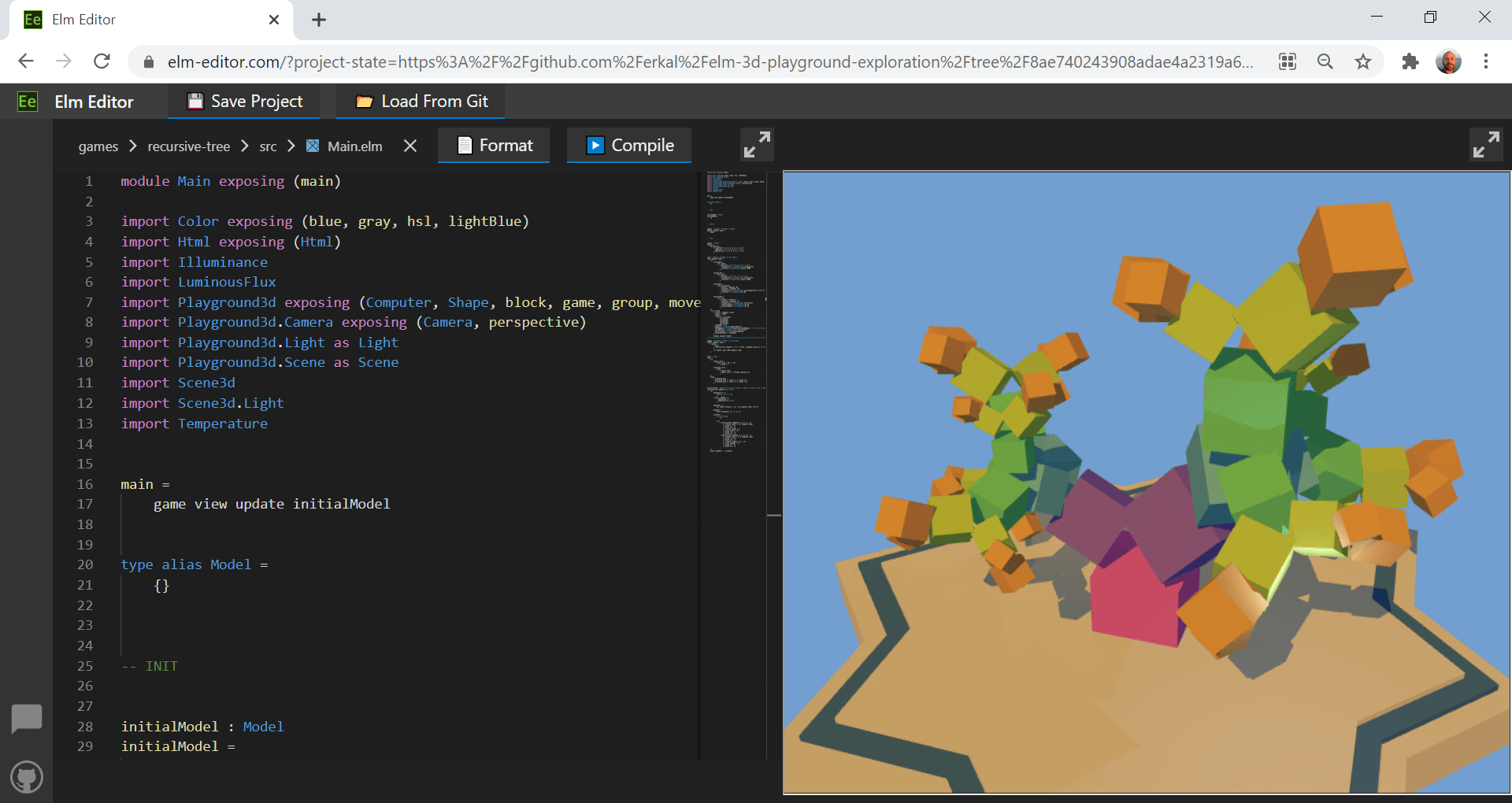Elm Fullstack is a tool for developing web services and full-stack web applications. It leverages the Elm programming language and its ecosystem of libraries. As it evolves, Elm Fullstack automates more and more activities in software development that humans had performed in the past.
Elm Fullstack currently offers:
- Persisting and restoring the state of backend Elm apps.
- Migrating the backend state when deploying a new program version: Design Report - Migrations in Elm Fullstack Deployments
- Generating functions to serialize and deserialize Elm values based on type declarations from Elm programs.
- Ports to integrate and interoperate with custom components written in any programming language.
- A single executable file (per operating system) integrating all tools with a command-line interface.
Use this command to run a server and deploy an example app:
elm-fs run-server --public-urls="http://*:5000" --deploy=https://github.com/elm-fullstack/elm-fullstack/tree/8d31a7ada98378d79ccf38482e969bb5995422cb/implement/example-apps/docker-image-default-appFor a guide on installation and configuration options, see How to Configure and Deploy an Elm Fullstack App.
The elm-fs executable file contains all the functionality to build apps and operate backend processes. You can download the files from the releases section on GitHub.
If you prefer deploying using docker, use the elmfullstack/elm-fullstack image from docker hub. The tags are aligned with the version IDs in the CLI executable file.
docker run -p 5000:80 -p 4000:4000 --env "APPSETTING_adminPassword=test" elmfullstack/elm-fullstackTo learn more about these artifacts' interfaces, see How to Configure and Deploy an Elm Fullstack App.
The easiest way to test a change in the source code is to trigger the GitHub action workflow in .github/workflows/test-and-publish.yml. This workflow gets you the results of automated tests and your version of the executable files. Push to your fork on GitHub to trigger this action.
As we can see in the workflow file, the project uses .NET 6 to build the executable file and run tests. You can download the dotnet tool from https://dotnet.microsoft.com/download/dotnet to build and test locally.
The rich chat room example app demonstrates features typically found in a chat app, such as user names, message rate-limiting, sound effects, etc. For a detailed description of this app, see the readme file at https://github.com/elm-fullstack/elm-fullstack/blob/main/implement/example-apps/rich-chat-room/readme.md
Elm Editor is an editor for developing Elm programs. It also provides tooling specifically for web frontend-apps to compile and view an app inline.

To see Elm Editor in action, check out the public instance at https://elm-editor.com
To learn more about how it works, see https://github.com/elm-fullstack/elm-fullstack/tree/main/implement/example-apps/elm-editor/readme.md